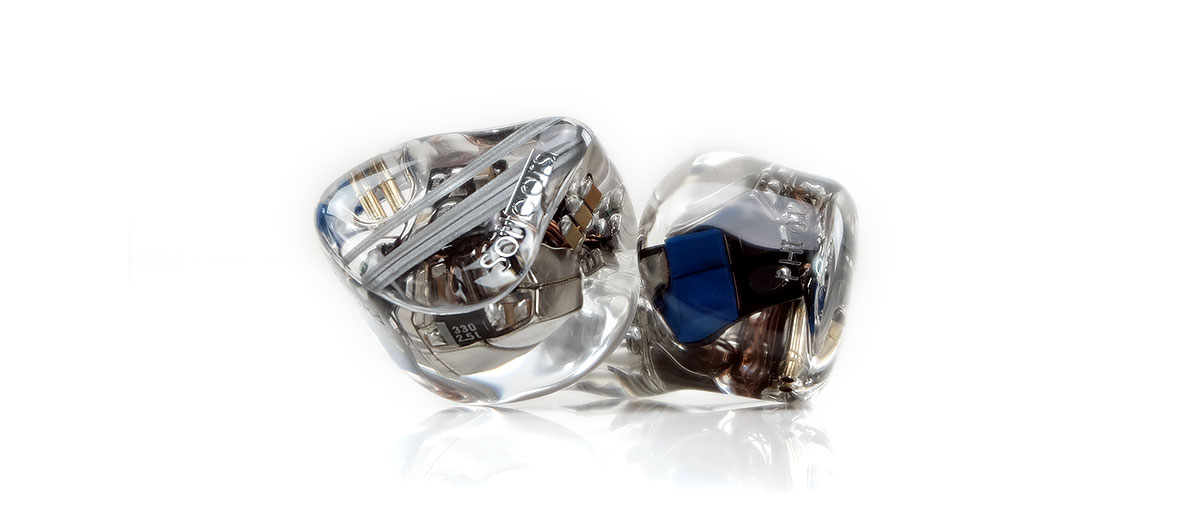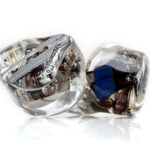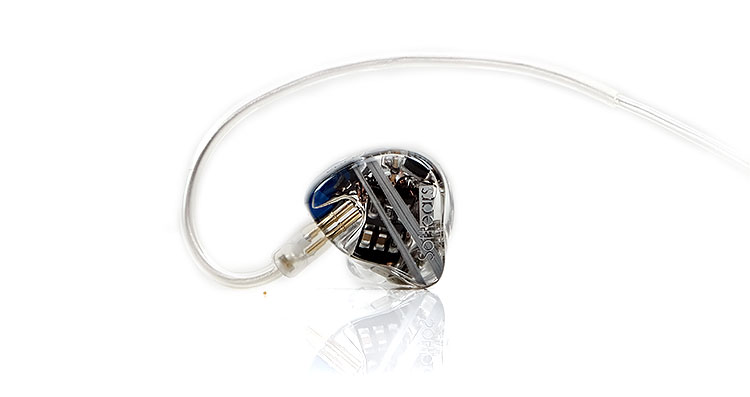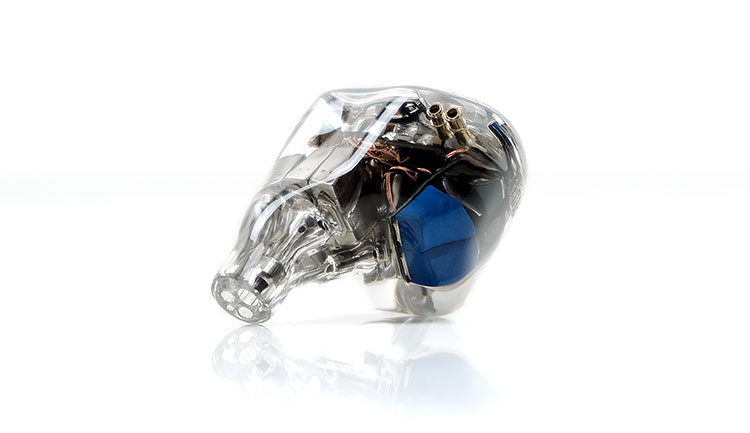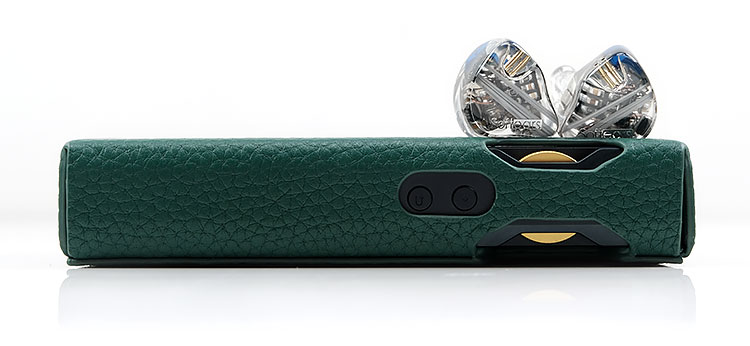Our review of the Softears RS10, which is a co-flagship 10 balanced armature driver reference series universal IEM with a 5-way crossover. It is priced at $2099.
Disclaimer: This was sent to us as a sample for our honest opinion. Headfonics is an independent website with no affiliate links or services. We thank the team at Softears for giving us this opportunity.
To read more about Softears products previously covered on Headfonics please click here.
Note, this article follows our latest scoring guidelines which you can read up on here.
The RS10 is the second of our triple product review series from newcomers Softears with the ‘entry-level’ RSV covered a bit earlier last year. This is a big step up both in terms of ambition from the RSV though, to be honest, I felt the RSV was an excellent performer for the price.
Billed as the co-flagship of their IEM line-up and sharing top billing with their hybrid electrostatic Cerebus monitor, the $2099 RS10 is an all-balanced armature creation with a bonafide reference tuning pitch and plenty of detail to the fore.
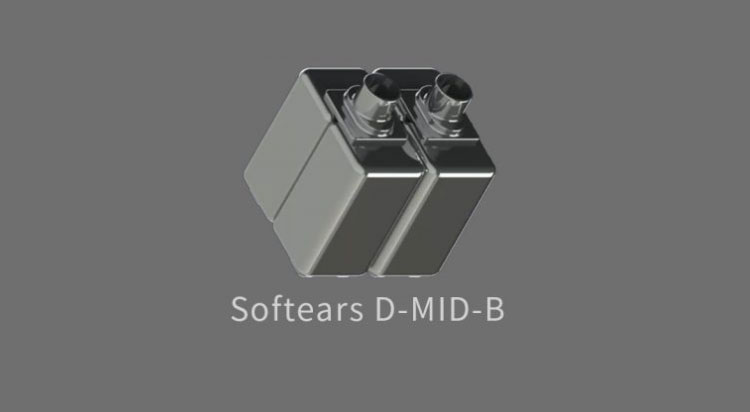
Tech Highlights
Drivers
The RS10 is a 10 balanced armature driver internal configuration. However, there is less play on the precise grouping and more of an emphasis on the unique 5-way crossover deployed inside and the type of BA being used.
The balanced armature drivers are customized, (D-Mid-B), which is not unusual for IEM makers to cite and are picked for adhering closely to the VDSF target response with a low level of distortion.
Those of you familiar with Moondrop may already know what the VDSF target response, (virtual diffuse sound field), is or how it looks with Moondrop IEMN such as the Blessing 2. Well, like Harman’s pitch, Moondrop believes this curve conforms to what they believe is the most enjoyable or natural sounding experience but from a specific in-ear monitor perspective.
Because it is a diffuse field target the curve is based on the frequency domain performance from a B&K HATS, (Bruel & Kjaer). This is a human head simulator with the aim to improve the low-frequency response and general fidelity of monitor drivers, (referred to as micro-speakers).
However, Softears go a bit further by citing that aside from the 10 there are an uncounted amount of passive driver units in the RS10. These do not emit sound but rather vibrate passively to attenuate air pressure, reduce fatigue, and improve the bass response.
Crossover
On paper, Softears has rolled out what seems to be a well-thought-out and fairly complex crossover for the RS10 driver grouping, impedance consistency, and phase control. The topology consists of 15 components inside 2 specific modules to reduce interference and maximize the RS10 efficiency. Having said that, the RS10 is not a super-sensitive IEM from our testing.
The RS10 crossover elements include 2 band-pass filters for precise mids control, (no Q factor specified), and a low-pass filter for the bass up to around 600Hz I presume.
It also has a 4th order LC band-pass filter to precisely control the frequency and impedance characteristics of the resulting output. In short, very little knock-on effect from older DAP outputs and amps with high impedance output values.
Because of the widely accepted concept of pinna gain, Softears has also focused the crossover and driver performance a bit more on the upper-mids response curve to keep it as natural sounding as possible.
However, for me, the standout of both the VDSF curve and the tuning, in general, is the bass performance which is anything but your average BA sound signature thanks I presume to the use of those passive drivers.
Design
If your internal engineering is confidently implemented then it becomes a quality design talking point in its own right. Nothing I like better than peering into the inner workings of an IEM and with a transparent smoothly polished shell the RS10 gives you plenty of that.
Consider the RS10 to be a quasi-custom type of design with its bubble-free contoured hollow body resin shell and matching faceplate. Only a tastefully applied dash of white across the plate with the Softears silver logo at the base keep this from being a spartan experience on the outside.
Less is more here; the design is focused more on revealing what’s on the inside rather than presenting you with a busy external aesthetic. A cynic would say cost-cutting but in the hands, it’s a beauty and up there with the Hum Pristine and Dolores transparent shell creations.
You can see clearly, I hope, from the pics some of the grouping and tubing. The mids and high drivers are to the fore and right on top of the nozzle bore, the two larger dual woofer drivers to the rear, and the connector and crossover circuit right at the back.
Stock Cable
The RS10 comes equipped with a 4-core 0.78mm 2-pin terminated 6N silver-plated single-crystal copper cable which I presume is a Litz geometry and fairly resistant to potential oxidizing green discoloration.
The length of the cable is about 1.2m with a nice and tight twisted finish below the splitter and with some clean complementary chrome-finished Softears branded barrels for the splitter and the 3.5mm TRS jack. The jacket itself is a soft transparent PVC
The connectors are less convincing with transparent min molded barrels that do not look that premium for me. Still, the right connector has some clear red marking to easily pick it out which is a plus. Above the jack, the RS10 cable is split and perhaps less appealing looking for me with some very long albeit quite soft and sparingly memory coating.
Overall, it’s an ok cable, nothing special but does what it needs to do which is keep the RS10 wearing experience low on microphonics, with light and easy handling and next to no memory retention or kinks.
Would I have liked to have seen better in a high-end IEM package? Most certainly yes, but there are worse also with those 4-wire OFC Plastic One cables still crop up from time to time though less frequently.
Comfort & Isolation
The RS10 has a fairly long quad-bore nozzle and combined with that nice shell contouring it should reach quite deep into your ear canal. I tend to call this a pro-style fit when referring to custom IEM nozzle lengths. Stage artists tend to like to get the output as close to the second bend as possible in the canal and these feel like they are going closer than most.
For a universal BA, passive isolation is excellent. Long nozzles and resin bodies tend to allow tips to really do their job deeper in the canal than aluminum constructs. Combined with the lack of bass venting ports in the shell you can really push out the background noise.
The tip choice is a bit lackluster with just a single set of s, m, and l sized single narrow bore black silicone tips. I would have expected more in there for the asking price, preferably branded ones also that people know and trust like Final E or Symbio.
However, the RS10 stock tip performance is actually quite good. They isolate well and produce a reasonably balanced sound so I can see why they were included.
Testing with Final E and Symbio did bring some changes with the Final E sounding a bit airier with more headroom whereas the Symbio W just dialed back on the upper mids and treble exposure a shade which some might like.
One word of warning, there is no lip on the RS10 nozzle. Though I have yet to find any tips that slide off them just watch on how loose your tip is when using them as it may end up staying in your ear. The nozzle is also fairly wide; I could not fit any Azla XELASTEC tips on them due to the wide bore which would have been a nice alternative to explore.
Accessories & Packaging
The RS10 packaging is compact and tidy, kind of reminds me of a subdued Unique Melody mini box from a few years back. This is a two-piece black square box with the outer sliding off the inner. There is some low-brow Softears silvery branding on the outside but not much else.
Inside the box, everything is packed into a faux leather stitched puck-styled case. It’s a fairly large and well-cushioned experience, one that a few high-end rollers should be familiar with as it is quite similar to the one 64 Audio is using of late.
I do like these cases, at least for general storage. They look nice also, soft to the touch, and well protected but they are not the most pocketable. You will get plenty of space, however, for the drivers, cable, and tips. Additional accessories also include a manual, warranty card, and a cleaning cloth.
Sound Impressions
Summary
The RS10 is a supremely detailed and largely neutral or reference-sounding monitor. I say largely because its calling card includes one of the most impressive BA-tuned low-ends I have heard in a long time.
Married to that impressive bass wallop is a clean and articulate midrange presentation with a slight Harman-esque upper-mids elevation. On top, a tastefully tuned treble that extends well shimmers in part but is not hugely aggressive or thinned out.
The depth is well above average for a multi-BA monitor though you are not hit with a wall of bass. The clarity and layering are what really stand out here. Softears has cut deep and fast into the RS10 mid-bass curve to reduce bass bleed to nothing, even into the upper bass it remains relatively flat and linear sounding.
It also means bass to mids separation is quite noticeable. I often prefer that type of sound signature, especially for modern synthwave and some R’n’B mixes that want to emphasize a strong fundamental.
However, it does mean the RS10 might come across as too clinical and slightly thin for tracks that place a larger emphasis on lower-mids presence. Classic guitar rock will not lack detail or imaging precision but may lack a bit of character and richness in its delivery.
The overall staging dimensions of the RS10 are more rounded than grandiose arena-sized. What it does very well though is the accuracy and clarity of the imaging. Instrumental separation is excellent, aided by those very articulate BA drivers. Complex recordings present zero issues for the RS10, especially when paired with a detail-orientated DAP such as the DX300 MAX.
Frequency Response
The RS10 VDSF optimized curve is not too far off the Harmon curve with an elevated sub-bass tuning from 20-100Hz that should immediately stand out when paired with almost any source.
This is not an overly warm low-end, however, with a distinct cut around 100Hz followed by a fairly flat and linear performance right up to 1k. That does a number of things such as keeping the RS10 bass-bleed free and ensuring the bass to mids separation to a maximum making it somewhat easier to pick out sub-bass rumble.
However, when the low-end is quiet the lower-mids will sound a little on the lean and flat side. The fundamental is excellent when called upon but without, note weight is fairly light and clean sounding up to 1k.
As you would expect from the VDSF curve the mids to upper mids have some elevation from 2-4k but it’s not overly-cooked for my preferences so vocals will have some welcome presence and a slightly more intimate focus but nothing you could call shouty.
Beyond that, the 4-6k range dims the energy down a bit to kill off any potential harmonic dissonance from the stronger 6-8k elevation in the treble. A good move here because it does sound surprisingly balanced sounding. The shimmer is there but not hugely so, just enough to give some welcome contrast to high-frequency spatial cues without sounding thinned out.
Timbre
There is some leeway here depending on your source pairing but otherwise, the RS10 delivers a very neutral timbre save for the enhanced fundamentals from the excellent sub-bass tuning.
By leeway I mean the level of transparency from the RS10 is very good. Plug it into a warm DAP and the timbre will get a dash of euphony, and a cleaner DAP will sound exactly that from the RS10.
It is really the power though that underpins the timbral performance of the RS10 and why I think power pop and R’n’B audiophiles will greatly enjoy the performance. Probably one of the better BA IEMs for ‘hitting the floor’ so to speak without muddying up the mids with excessive warmth.
The mids do have a slightly dry tone to them, they are not imbued with huge amounts of body or a rich coloration. Instead, this is a lighter sweeter sound with more contrast than girth and a very slight bias to odd-harmonics over even-harmonics through the upper mids.
Treble is extended, at times it can shimmer and seem slightly north of neutral in terms of brightness but this is somewhat relative. It will sound brighter than the RSV but compared to something like the CTM Da Vinci X it sounds more refined and smoother in the highs.
Staging & Dynamics
Staging depth over absolute width and a fairly neutral top-end in terms of extension and air. The RS10 does well in creating a large studio room or a medium-sized sound hall but stops short of offering grandiose arena-like presentations.
Vocals will come to the fore somewhat as will that low-end fundamental; two key areas I tend to look for to underpin any performance. Lower-mids instrumentals will tuck in behind up to 1k and percussion will shine a bit also when things get busy in the upper mids.
However, the resolution of the RS10 is just excellent and might initially lull you into thinking you have a very spacious offering here. Why is that? The play on imaging is so impressively accurate that you will be hard-pressed not to pick up every little spatial detail happening in a recording with an equally resolving source/amp.
That produces an immersive and accurate soundstage rather than a large diffuse and vague performance. I can see clearly why Softears pitch the RS10 squarely at the monitoring crowd as channel mixing should be a doddle with the RS10.
Click on page 2 for pairings and select comparisons

